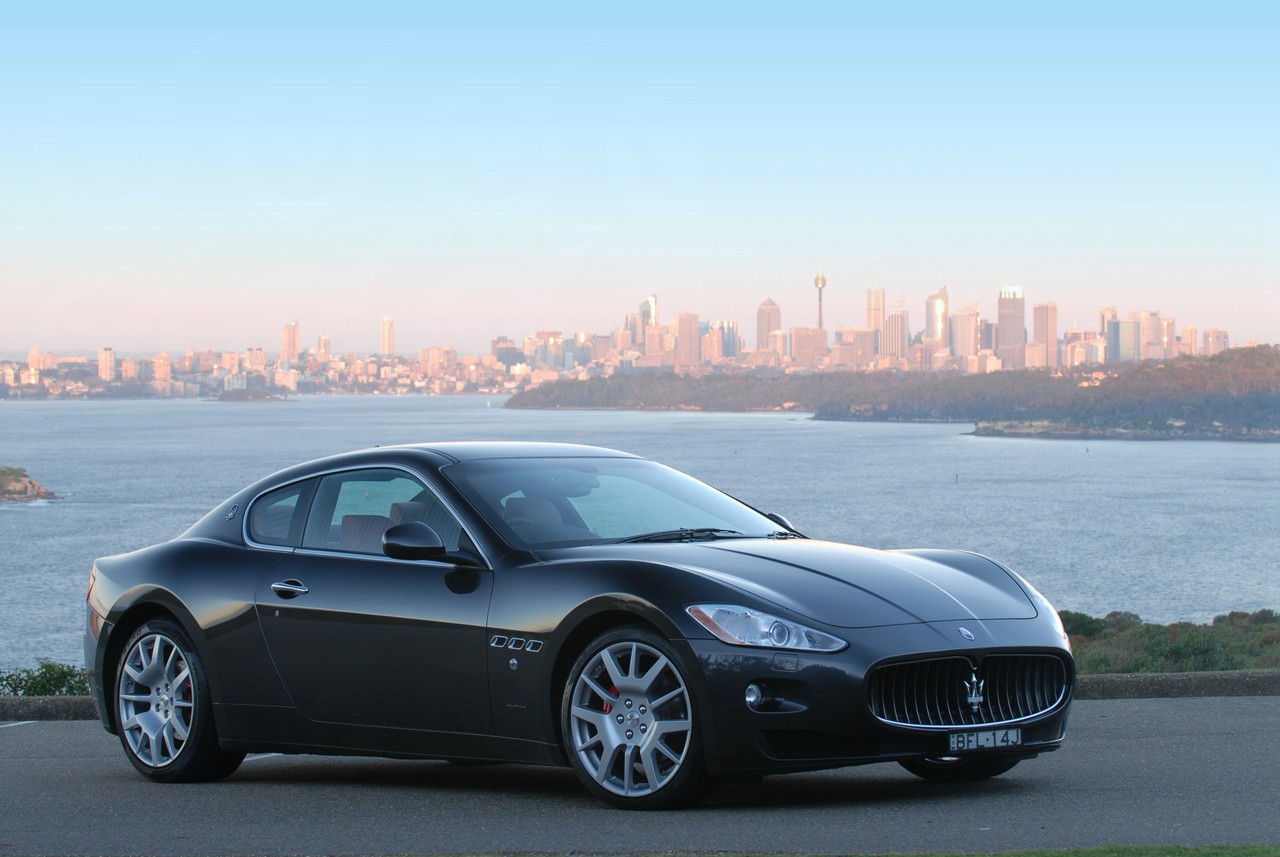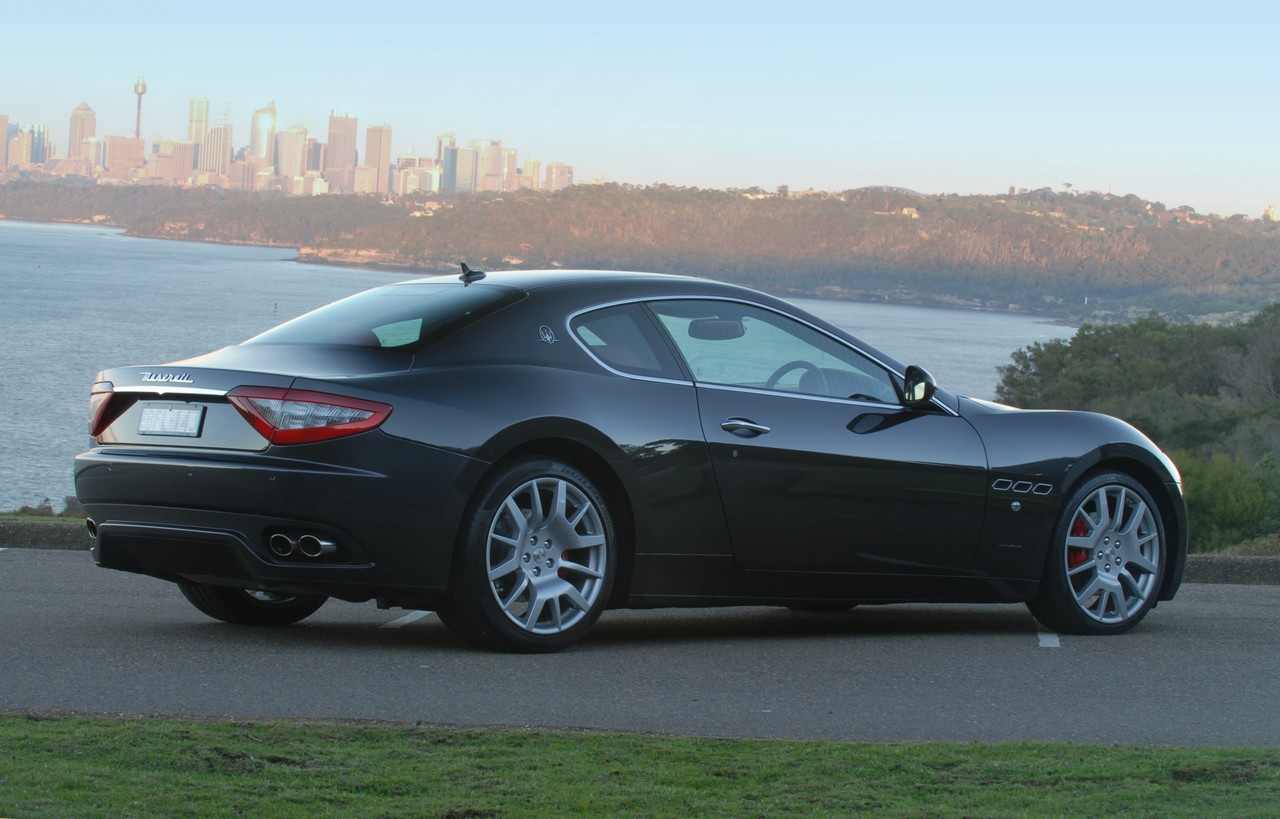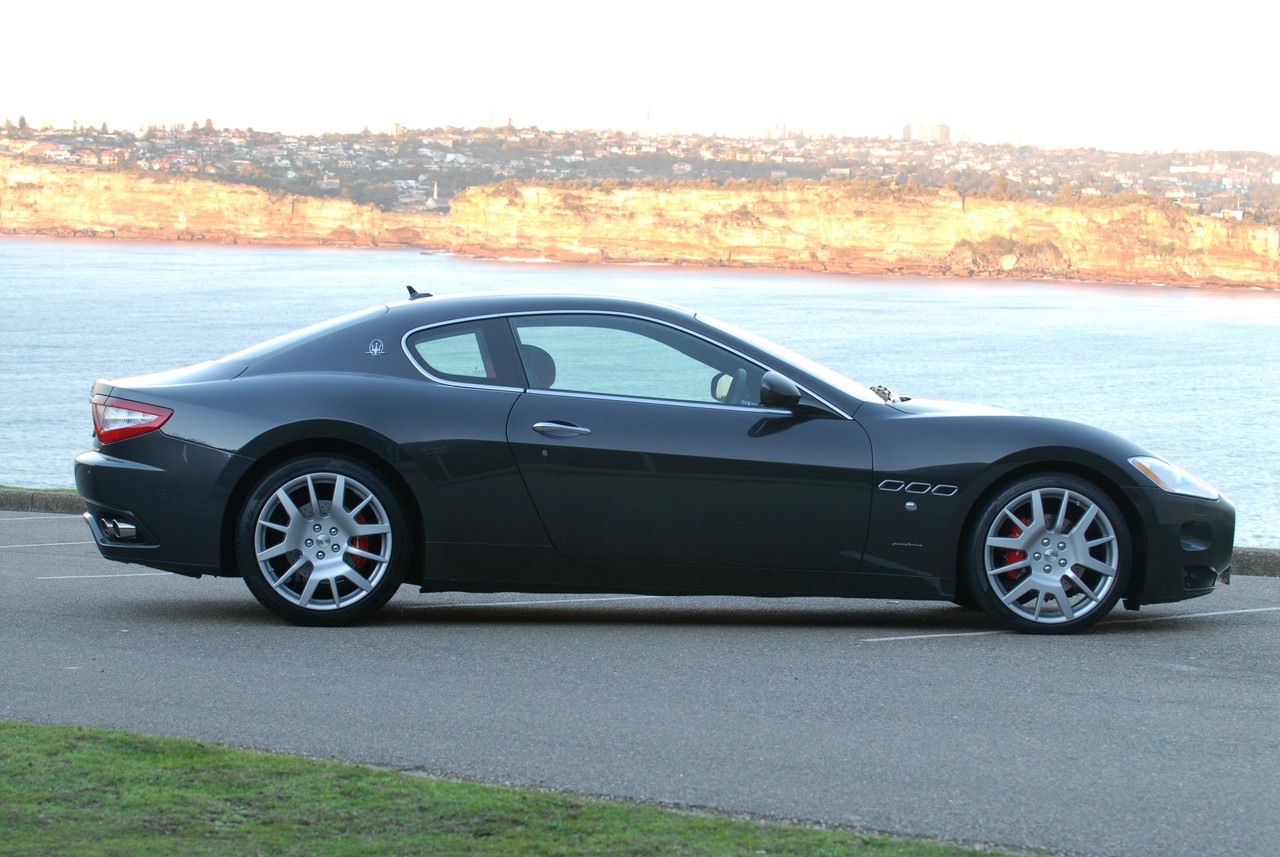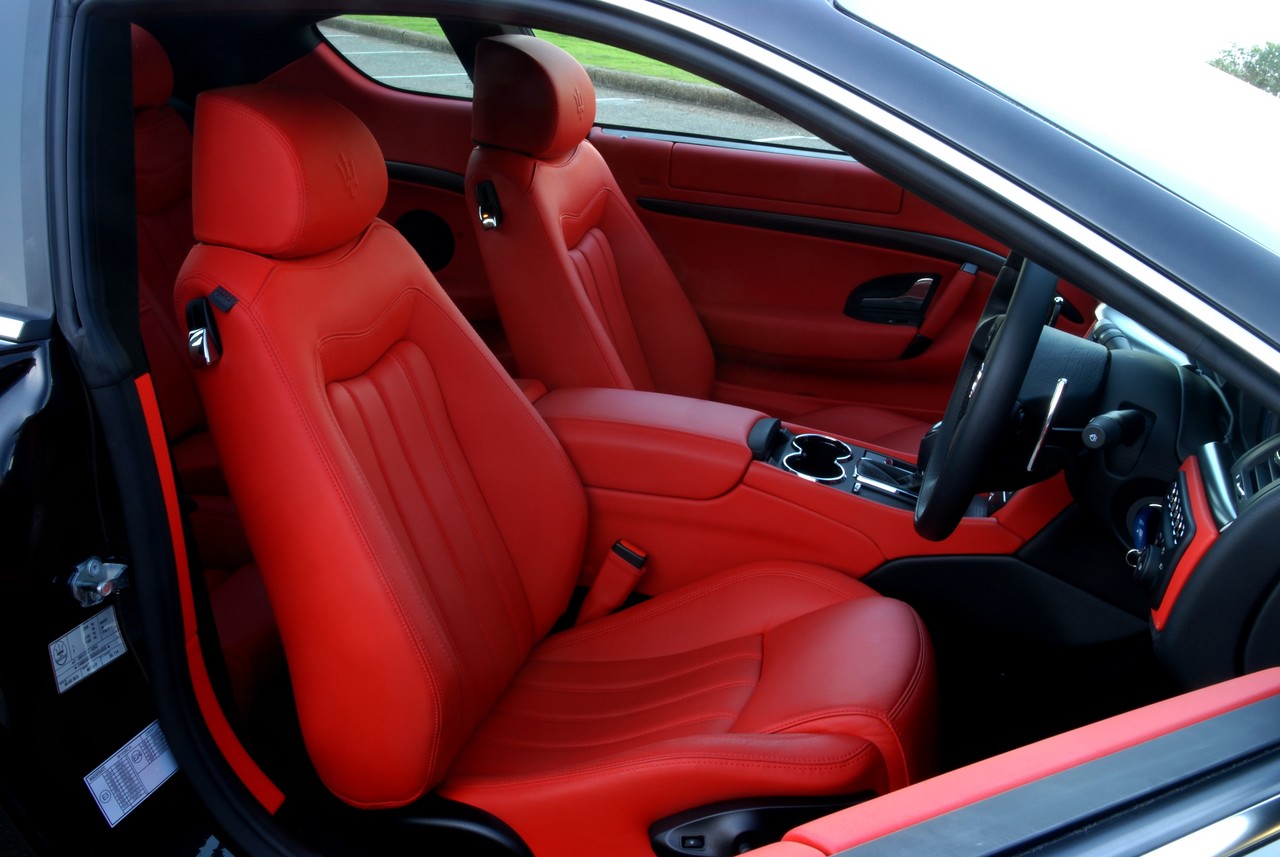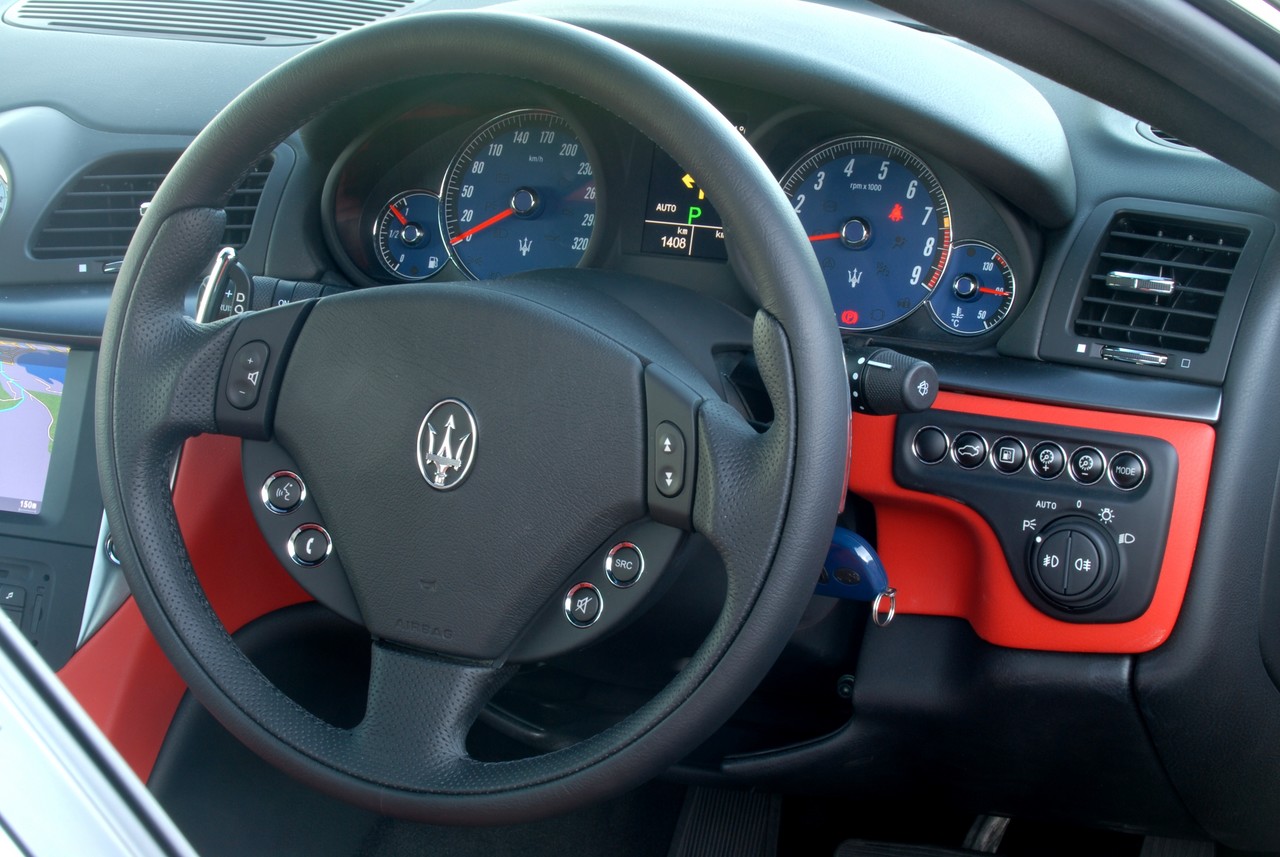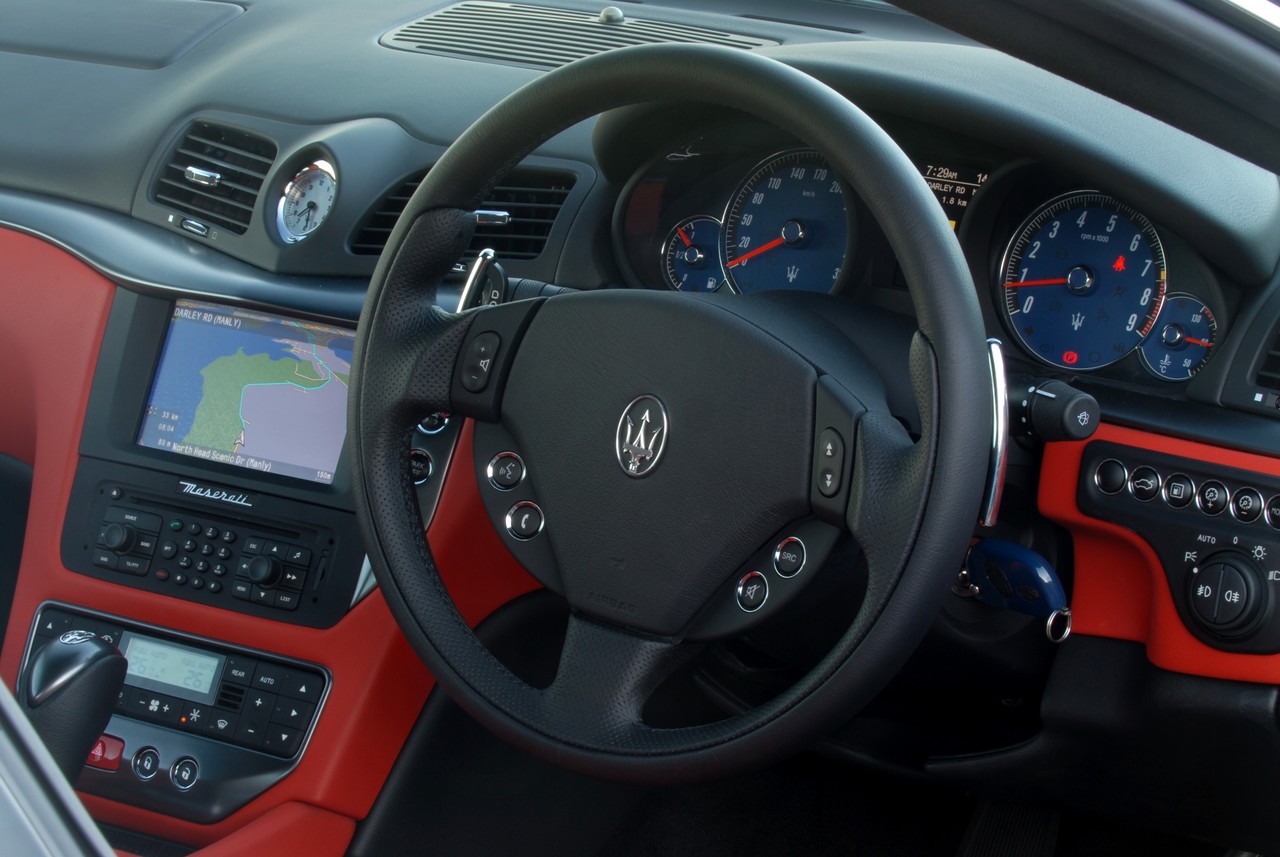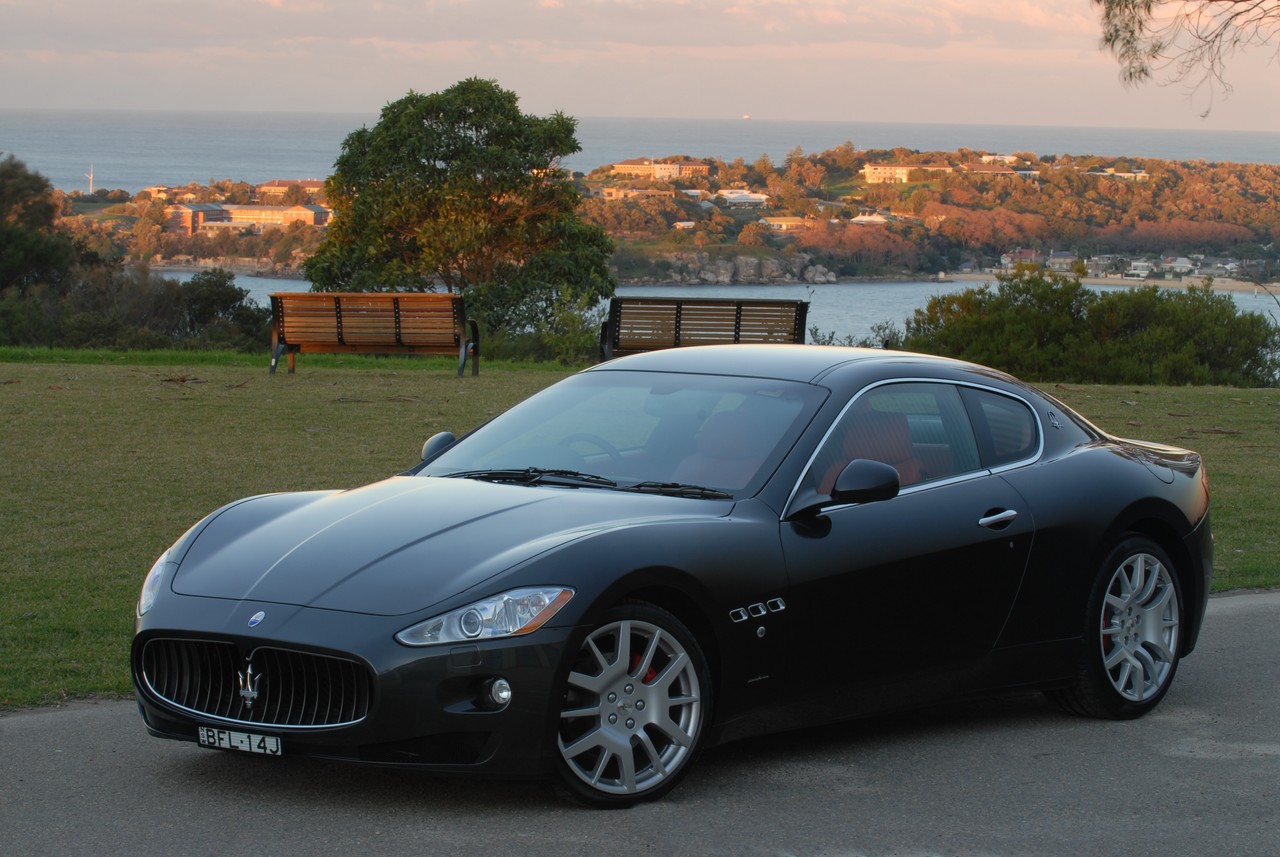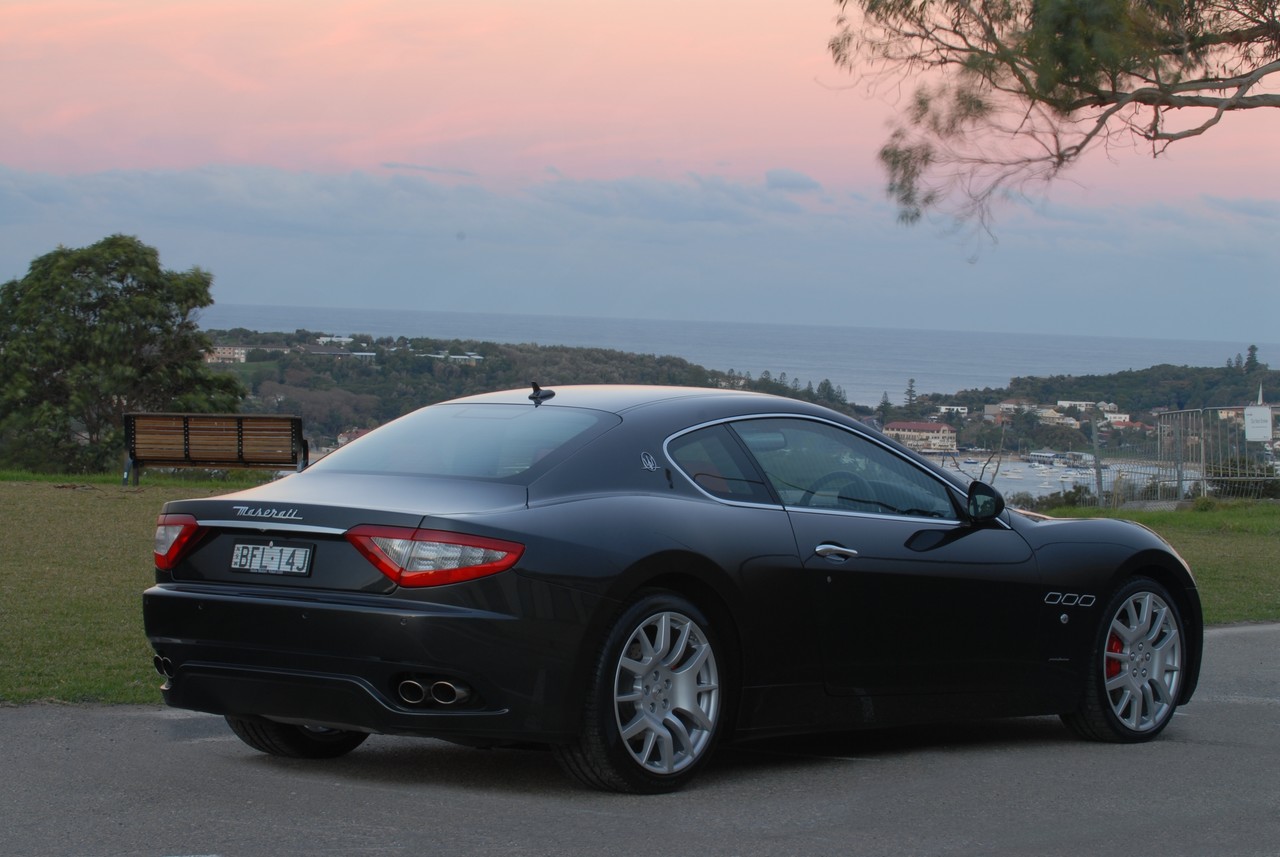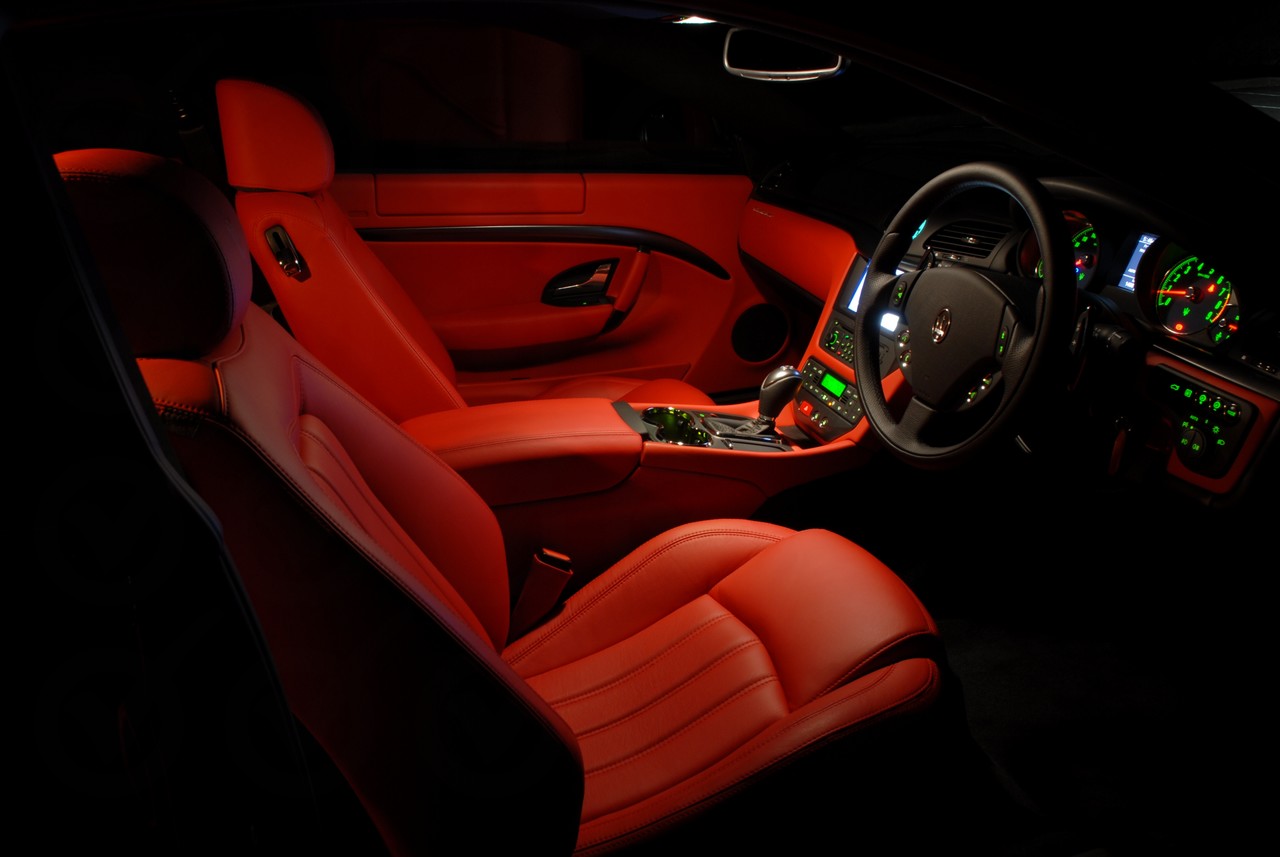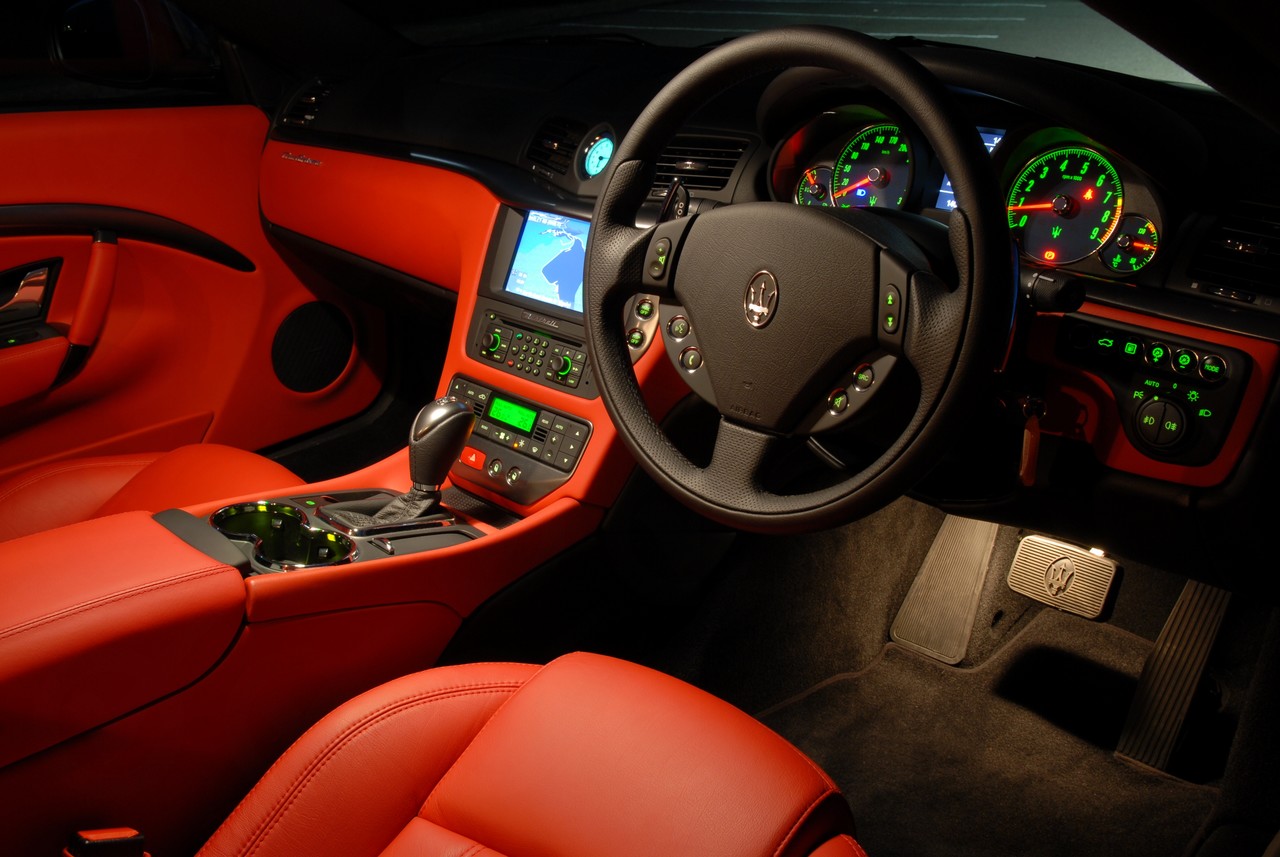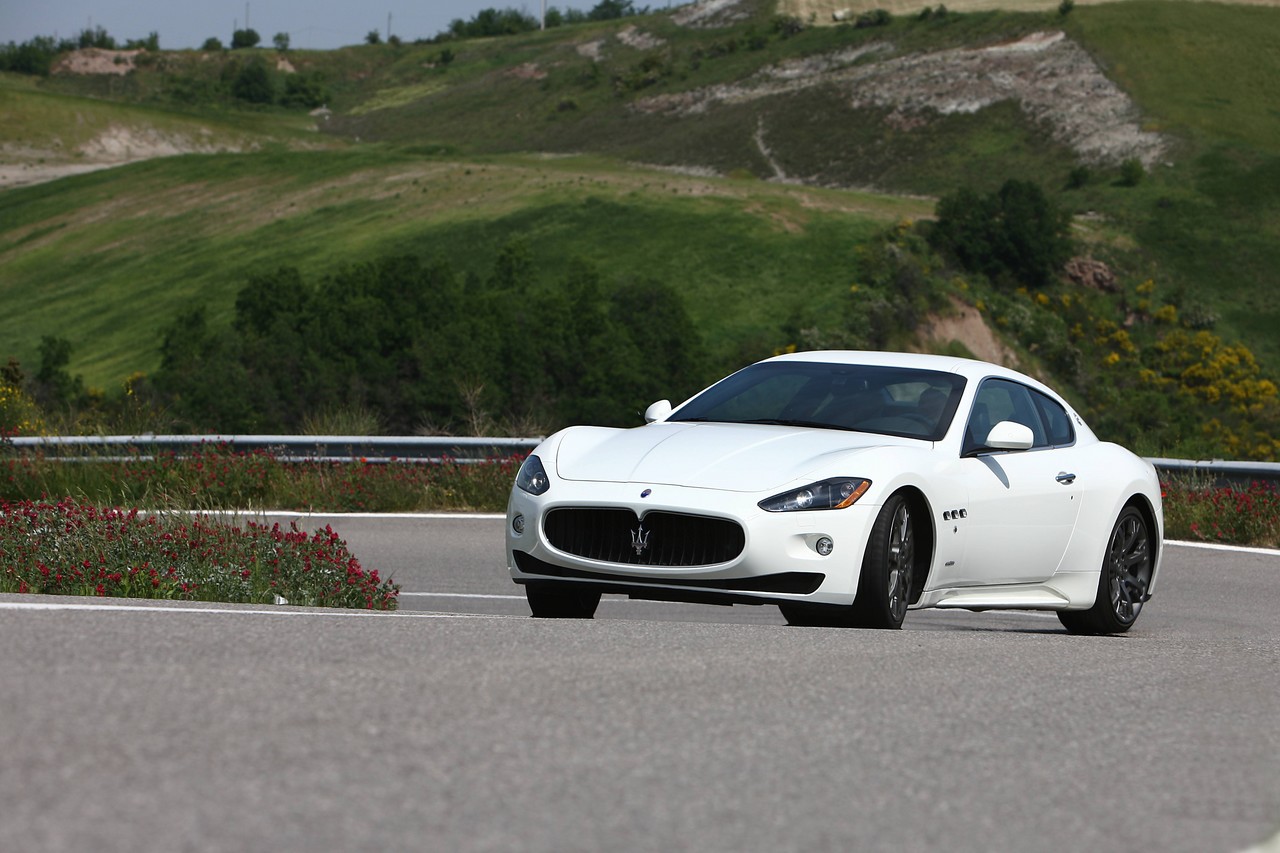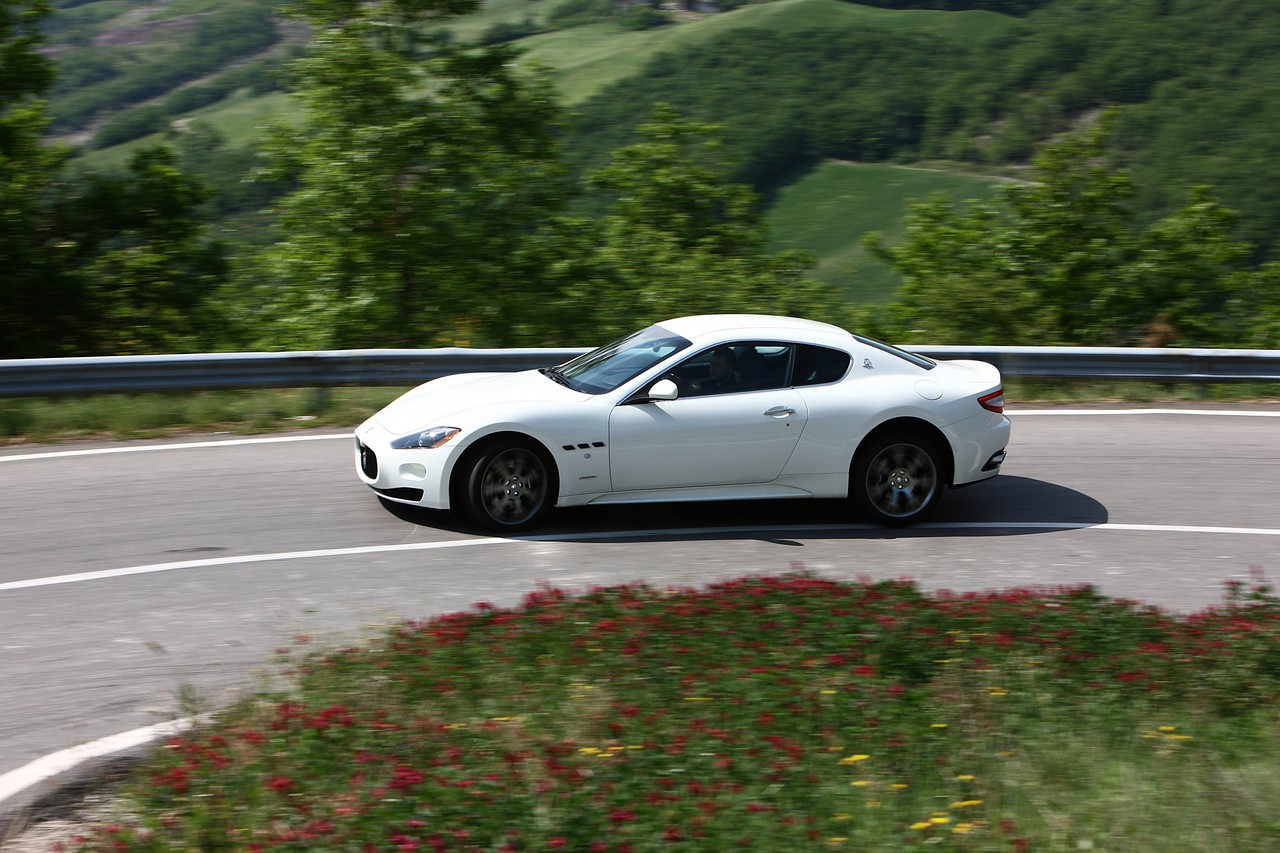
- Free-revving V8 engines sing sweetly
- Excellent ride/handling balance
- Useful rear seat
- Steering is accurate…
- … but oddly weighted and lacks feel
- Awkward seating position
- 4.2-litre V8 engine lacks low-rev response
- High fuel consumption
- Underwhelming brakes
Overview
Released in Australia in October 2007, the Maserati M145 GranTurismo was a four-seat coupe. Manufactured in Modena, Italy, the rear-wheel drive M145 GranTurismo range initially consisted of a single, unnamed variant that was powered by a 4.2-litre V8 petrol engine mated to a six-speed ZF automatic transmission. The GranTurismo range, however, was subsequently expanded with the following additions:
- GranTurismo S (November 2008);
- GranTurismo S MC Shift (May 2011);
- GranTurismo MC Stradale (June 2011 and November 2012); and,
- GranTurismo Sport (October 2012, replaced the GranTurismo S and S MC Shift).
Engine
Produced by Ferrari, the 4.7-litre V8 petrol engine had an aluminium alloy cylinder block and head, double overhead camshafts, four valves per cylinder, variable intake valve timing, wet sump lubrication and a compression ratio of 11.25:1. The exhaust system featured pneumatically-controlled valves which would open above 3000 rpm for a louder exhaust note.
Transmissions
The M145 GranTurismo was initially available with a six-speed ZF 6HP26 automatic transmission which had adaptive gearshift behaviour and steering wheel gearshift paddles. Introduced in the GranTurismo S, the six-speed semi-automatic ‘MC Shift’ transmission had a dry twin-plate clutch and was positioned in front of the rear axle (i.e. a transaxle layout), resulting in a 47:53 weight distribution compared to 49:51 for the standard GranTurismo. Both transmissions, however, had selectable Auto, Manual, Sport and Ice modes.
Dimensions and suspension
Styled by Pininfarina, the M145 GranTurismo was 4881 mm long, 1847 mm wide, 1335 mm tall and had a 2942 mm long wheelbase. Furthermore, the M145 GranTurismo had double wishbone front suspension and rear suspension. The entry-level GranTurismo variant was also fitted with Maserati’s ‘Skyhook’ damping system suspension system which provided continuously adjustable damping according to body and wheel movements.
| Variant | Engine | Trans. | Years | Peak power | Peak torque |
|---|---|---|---|---|---|
| N/A | 4.2-litre petrol V8 | 6sp auto | 2007-19 | 298 kW at 7100 rpm | 460 Nm at 4750 rpm |
| S | 4.7-litre petrol V8 | 6sp semi-auto | 2008-11 | 323 kW at 7000 rpm | 490 Nm at 4750 rpm |
| 6sp auto | 2009-12 | ||||
| S MC Shift | 4.7-litre petrol V8 | 6sp semi-auto | 2011-12 | 323 kW at 7000 rpm | 490 Nm at 4750 rpm |
| 2012 | 331 kW at 7000 rpm | 510 Nm at 4750 rpm | |||
| MC Stradale | 4.7-litre petrol V8 | 6sp semi-auto | 2011 | 331 kW at 7000 rpm | 510 Nm at 4750 rpm |
| 2012-13 | 338 kW at 7000 rpm | 520 Nm at 4750 rpm | |||
| Sport | 4.7-litre petrol V8 | 6sp auto, 6sp semi-auto |
2012-19 | 338 kW at 7000 rpm | 520 Nm at 4750 rpm |
Safety equipment
Standard safety equipment for the GranTurismo included dual front airbags, front side airbags, front curtain airbags, ABS, electronic brake force distribution, electronic stability control, traction control and pretensioners and load limiters for all four seatbelts.
Brakes
The standard Brembo braking package for the GranTurismo consisted of 330 mm by 32 mm ventilated front brake discs and 330 mm by 28 mm ventilated rear discs; four-piston calipers were fitted front and rear.
The Brembo braking package for the GranTurismo S and GranTurismo Sport, however, consisted of 360 mm by 32 mm dual-cast (combination of cast-iron and aluminium) front brake discs with six-piston monoblock front calipers and 330 mm by 28 mm dual-cast rear discs with four-piston calipers.
Finally, the GranTurismo MC Stradale had 380 mm by 34 mm carbon ceramic front brake discs with six-piston calipers and 360 mm by 32 mm carbon ceramic rear discs with four-piston calipers.
Features
Standard features for the GranTurismo included 20-inch alloy wheels with 245/35 R20 front and 285/35 R20 rear tyres, a Bose sound system with six speakers, a CD player, 30 GB hard drive, satellite navigation and seven-inch colour display, dual-zone climate control air conditioning, Poltrona Frau leather upholstery, heated front seats, cruise control, bi-xenon headlights with washers, front fog lights, rain-sensing wipers, automatic headlights, rear parking sensors, a multi-function steering wheel, Bluetooth mobild phone connectivity with voice recognition, remote central locking, power windows and heated mirrors, power folding mirrors, a power adjustable steering wheel (height and reach), power-operated park brake, ambient lighting, tyre pressure monitoring, trip computer, a motion-sensing alarm and an immobiliser.
The GranTurismo was also fitted with a self-locking differential as standard.
Released in November 2008, the GranTurismo S was differentiated by its specially designed 20-inch alloy wheels, firmer suspension, black grille and headlight surrounds, side skirts, integrated rear spoiler, oval-shaped exhaust tailpipes and Alcantara interior trim. When specified with the automatic transmission, the GranTurismo S was also fitted with the Skyhook adaptive damping system.
GranTurismo S: MC Sportline package
From July 2010, the GranTurismo S was available with an MC Sportline package which included firmer suspension settings. Exterior changes for the MC Sportline package consisted of carbon fibre spoilers (front and rear), carbon fibre door handles and rear view mirrors, and black door sills and exhaust tips. Inside, there was carbon fibre interior trim for the dashboard, door panels, centre console and extended gearshift paddles.
GranTurismo Sport
Released in October 2012, the GranTurismo Sport replaced the S and S MC Shift variants. Visually, the GranTurismo Sport could be identified by its revised headlights with daytime LED driving lights, matt blue brake calipers, ‘Shadow line’ trim and smoked tail-lights. Inside, there were new contoured front seats (which increased rear legroom) and redesigned rear seats; models with automatic transmissions had full leather upholstery, while models with the semi-automatic MC Shift transmission had Alcantara inserts.
For the GranTurismo Sport, models with automatic transmissions also featured Maserati’s MC Auto Shift package for faster gearshifts and exhaust bypass flaps. The GranTurismo was also fitted with the Skyhook adaptive damping system as standard.
GranTurismo MC Stradale
Released in June 2011, the GranTurismo MC Stradale was based on GranTurismo S but was 110 kg lighter (dry weight of 1670 kg) due to its carbon fibre front seats (with leather and Alcantara trim), the omission of rear seats, less sound insulation and a carbon ceramic Brembo braking package (detailed above).
Visually, the MC Stradale could be identified by its bonnet air intakes, new front bumper with splitter, front splitter, front guards with vertical air-vents, side skirts and revised rear bumper with splitter. Inside, there was carbon fibre and Alcantara interior trim.
The MC Stradale had flow-formed 20-inch alloy wheels (with 255/35 front and 295/35 rear Pirelli P-Zero Corsa tyres), while suspension changes consisted of a lower ride height (by 10 mm at the front and 12 mm at the rear), eight per cent stiffer springs and larger anti-roll bars. Furthermore, the MC Shift transmission was revised for faster gearshifts in the ‘Sport’ and newly-introduced ‘Race’ modes (60 ms for the latter), enabling the MC Stradale to accelerate from rest to 100 km/h in 4.6 seconds.
A second batch of MC Stradale editions was delivered to Australia in November 2012. The 2012 MC Stradales were fitted with redesigned pistons and revised engine mapping to increase peak power and torque by 7 kW and 10 Nm. Visually, the 2012 MC Stradale could be identified by its daytime LED running lights and LED tail-lights with smoked lens covers.
In October 2013, Australian-deliveries commenced of twenty four-seat MC Stradale vehicles.
Brochure
Related links
